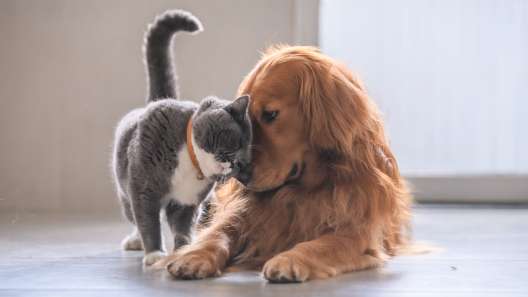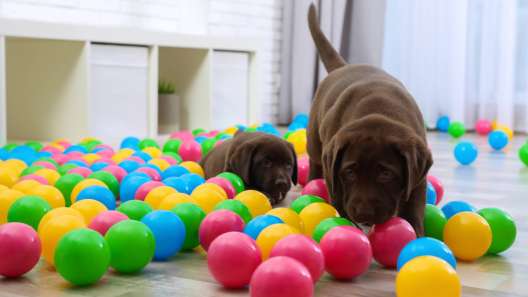-
Activity Level:
low
-
Shedding Level:
high
-
Grooming Level:
moderate
-
Trainability:
high
-
Good for Novice Owners:
high
-
Adaptability:
moderate
-
Kid/Pet Friendly:
often
-
Prey Drive:
low
-
Watchdog:
aware
- Average Size: Small
- Average Lifespan: 13-15 years
- Registered?: aca, akc
Pug Dog Breed Information
Overview
Temperament
Adaptability
Health
Owner Experience
Grooming
Activity Level
Size
Life Span
Did You Know?
The Pug, or Pug Dog, is famous for their flat-faced appearance and large, soulful eyes. One of the facts about Pugs is that they are an ancient dog breed that originated in China over 2,000 years ago.
They were originally developed as a refined pet of Chinese royalty along with the Pekingese and the Shih Tzu. During this time, the Pug was considered a national treasure that outsiders could only access if one was gifted to them.
Dutch traders from the 1500s can be credited with bringing the Pug onto the world stage when they brought some back to Europe with them. They quickly became the mascot of Holland’s Royal House of Orange and made their way to England as nobility traveled there.
The Pug made its way to the United States in the 1800s. The AKC recognized the Pug as part of the Toy Group in 1885. Now, the Pug is a popular dog breed worldwide. They are a popular companion that provides their owners with plenty of love and laughter from their comedic and playful antics.
The Pug is a playful and outgoing dog breed with a charming personality. They tend to be very loving towards children and also get along well with other pets and dogs. They are a companion breed at heart known for their gentle nature and sociable personality.
As one of the most affectionate dog breeds, they love to give love and receive it in return. Their sensitive nature makes them intuitive as well and Pugs will often sense the moods of their owners and react accordingly. They crave attention and affection from their owners and are big fans of napping.
These little dogs usually aren’t prone to barking a lot, but can easily be trained into it, especially if they are encouraged to do it a lot as puppies. Socialization early and often can help keep barking to more of an alert and less of a nuisance. You can also train your dog to stop barking early on to help keep it from becoming a nuisance when they are older.
This dog breed is often described as an ideal house dog and they are moderately adaptable. They will do well in homes of any size, including apartments. The Pug also adapts well to city or country life and is a good fit for single owners or families of any size.
Although they are highly adaptable to various living situations, they are less adaptable to climates. Pugs are very sensitive to heat and overexertion, so they are best suited to moderate climates. They also do not handle winter weather very well. They may enjoy playing in the snow for a short time, but they are still generally one of the dog breeds that hate winter. They also love to be with their families and will not be happy if left alone for a long time.
As with any dog breed, the Pug has some potential health conditions to be aware of. In particular, corneal ulcers and dry eye are some potential eye problems that can occur. Additionally, Pugs can be susceptible to hip dysplasia, patellar luxation, and encephalitis. Good breeding practices and the health of the parents make a big difference in the health of Pug puppies.
Reputable breeders screen their dogs to ensure they are not passing preventable issues to puppies. Make sure you ask about the health and genetic history of the parents. You can also ask about any health tests or clearances that have been done. Recommended health tests from the Pug Dog Club of America include a Pug Dog Encephalitis (PDE) DNA test, a hip evaluation, an ophthalmologist evaluation, and a patella evaluation.
Pugs are also big foodies. They love to eat! Their love for food means this dog breed is prone to obesity. As brachycephalic dogs, their large heads and short snouts often cause respiratory problems, which can limit their exercise at times and contribute to weight gain. Obesity can exacerbate respiratory issues in your Pug, so it’s important to watch their caloric intake, limit the use of treats as a reward, and ensure they get enough exercise.
Due to their short snout, Pugs are also prone to “reverse sneezing”, especially when they are excited. This will cause them to quickly gasp and snort, which can sound relatively alarming. These episodes are usually not harmful as your Pug is just clearing their palate and throat. Sometimes, you can help shorten these episodes by gently massaging your dog’s throat.
The Pug tends to be easy to train and is a good fit for owners of any experience level. They are even considered one of the best dog breeds for first-time owners! They are eager to please their owners and tend to pick up on commands quickly.
They are sensitive souls and their feelings can be hurt easily, so they will not respond well to harsh corrections. This dog breed responds best to consistent training that focuses on positive rewards and will benefit from participation in puppy training classes.
Pugs have smooth, glossy, and short coats. Their fur is fine and soft. Although their coat is generally low-maintenance, it will shed throughout the year. Brushing your dog’s coat weekly or a few times a week will help remove loose fur and keep it on the brush instead of all over your home.
Aside from brushing, Pugs only need occasional baths on an as-needed basis. If your Pug has gotten into something messy or starts to smell, it’s time for a bath. It’s also important to trim their nails regularly, check and clean their ears and face wrinkles, and brush their teeth.
Overly long nails will make moving around uncomfortable and painful, so it’s good to trim your Pug’s nails once or twice monthly, or more often if needed, to keep them comfortable. Because Pugs have floppy ears, they can be susceptible to trapping moisture, dirt, or debris. Checking their ears regularly and cleaning them as needed helps to keep them healthy and comfortable.
The same goes for their iconic face wrinkles. You want to regularly check and clean their face wrinkles to make sure skin folds are clean, dry, and not irritated. Brushing your dog’s teeth helps reduce tartar buildup and prevent dental problems. Daily brushing is ideal. Getting your Pug used to these grooming tasks as a puppy will help make it a positive bonding experience and a much easier process throughout their life.
This dog breed has a low to moderate energy level. They can tend to be couch potatoes and will be one of the laziest dog breeds if you let them. Generally, daily walks and some play sessions are enough exercise for this dog breed.
They may have short bursts of energy as they have a very playful nature, but they will tire easily. Monitoring them, taking breaks, and exercising in short bursts are safe ways to exercise flat-faced dogs. Breaking up playtime, walks, or other activities into several short sessions throughout the day can help your Pug get enough exercise without overdoing it.
Because of their small stature, bulging eyes, and snub nose, it’s important to avoid rough play and to ensure your Pug doesn’t push themselves too hard, especially in the heat. Some Pugs can handle a little more activity and even compete in some dog sports like agility, rally, and obedience. Make sure you check with your vet first before jumping into dog sports with your dog.
A full-grown Pug will usually stand 10-13 inches tall at the shoulders and weigh 14-18 pounds. This makes them one of the smallest dog breeds, but not the smallest breed of the Toy Group.
Pugs generally live for 13-15 years on average.
The Pug was a popular pet of the Buddhist monasteries in Tibet.









